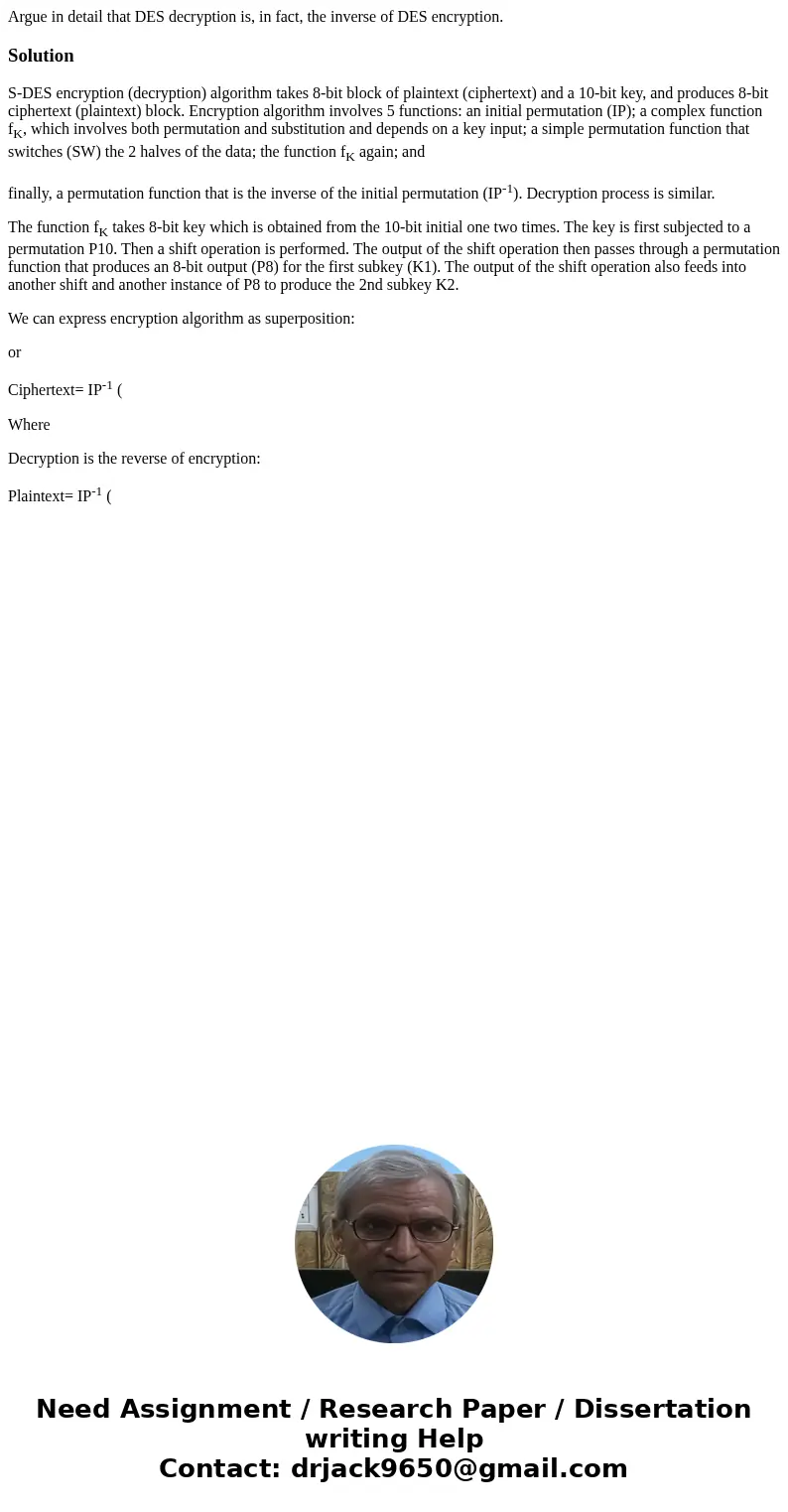Argue in detail that DES decryption is in fact the inverse o
Solution
S-DES encryption (decryption) algorithm takes 8-bit block of plaintext (ciphertext) and a 10-bit key, and produces 8-bit ciphertext (plaintext) block. Encryption algorithm involves 5 functions: an initial permutation (IP); a complex function fK, which involves both permutation and substitution and depends on a key input; a simple permutation function that switches (SW) the 2 halves of the data; the function fK again; and
finally, a permutation function that is the inverse of the initial permutation (IP-1). Decryption process is similar.
The function fK takes 8-bit key which is obtained from the 10-bit initial one two times. The key is first subjected to a permutation P10. Then a shift operation is performed. The output of the shift operation then passes through a permutation function that produces an 8-bit output (P8) for the first subkey (K1). The output of the shift operation also feeds into another shift and another instance of P8 to produce the 2nd subkey K2.
We can express encryption algorithm as superposition:
or
Ciphertext= IP-1 (
Where
Decryption is the reverse of encryption:
Plaintext= IP-1 (

 Homework Sourse
Homework Sourse